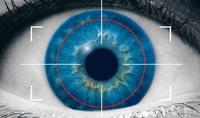-
California launches forgery-proof driver's license
California’s Department of Motor Vehicles has begun issuing a redesigned security-enhanced drivers license which is loaded with features to thwart would-be forgers and identity thieves; this is the first major revision to the card since 2001
-
-
Voice biometrics help detect Euro terror plot
Western intelligence services say that the discovery of the recent Euro terror plot owes at least some of its success to voice recognition technology that allows law enforcement electronically to match a voice to its owner; the technique can be an effective antiterror tool, and law enforcement agencies are already considering how a voice database could help thwart future plots
-
-
India embarks on ambitious biometric project: 1.2 billion IDs

Yesterday India officially launched the world’s most ambitious biometrics project: assigning a unique 12-digit number to each of the country’s 1.2 billion people; the project, which seeks to collect fingerprint and iris scans from all residents and store them in a massive central database of unique IDs, is considered by many specialists the most technologically and logistically complex national identification effort ever attempted; the government says unique ID numbers will help ensure that government welfare spending reaches the right people, and will allow hundreds of millions of poor Indians to access services like banking for the first time
-
-
Sector Report for Tuesday, 28 September 2010: Authentication / Biometrics
This report contains the following stories.
Plus 1 additional story.
-
-
A glimpse at the future direction of biometrics
The 18th Biometric Consortium Conference (BCC) was held in Tampa, Florida, last week; hundreds of exhibitors and speakers offered a window into the future of biometrics; attendees could not but notice the presence of large number of companies offering iris scan solutions, but NIST’s Fernando Podio, the event’s co-chair responsible for the development of the conference programs, is right: “Considering the number of high-level demonstrations, and highly detailed users’ and industry presentations, it would be impossible to pick out any program, company or product that was any more remarkable than the next”
-
-
Behavioral biometrics to detect terrorists entering U.S.
DHS prototype designed to detect “fidget factor” of possible terrorists; the behavioral biometrics monitoring system gauges small changes in a person’s body, dubbed the “fidget factor,” especially in answer to a question such as “Do you intend to cause harm to America?”
-
-
Aussies launch security research network
The Australian government has launched National Security Research Directory — a directory of hundreds of experts operating in a burgeoning list of fields across IT security, biometrics and counter-terrorism
-
-
Fast DNA analysis for law enforcement unveiled
The cost and complexity of current forensic DNA analysis methods have contributed to significant processing backlogs throughout the criminal justice system; Lockheed Martin and ZyGEM Corp. unveil a new platform that uses recent developments in microfluidic research and development to accelerate the DNA identification process
-
-
NYPD buys new portable fingerprint scanners
The NYPD is armed with a portable fingerprint reader that allows cops immediately to confirm identities at crime scenes with the roll of a thumb; they can also be used to identify the dead at homicide and accident scenes; the NYPD has become increasingly dependent on technology, a move that has helped it offset a decrease in the size of the force; there are about 6,000 fewer officers than there were in 2001
-
-
Sector Report for Tuesday, 14 September 2010: Authentication / Biometrics
This report contains the following stories.
Plus 2 additional stories
-
-
DHS testing iris scan technology at border crossings

DHS is beginning a 2-week trial of iris scanning technology at a Border Patrol station in McAllen, Texas, where they will be used on illegal immigrants; a new generation of cameras that capture images from six feet away instead of a few inches; DHS will test cameras that take photos from 3 or 4 feet away, including one that works on people as they walk by; the ACLU is raising objections, saying the cameras could be used covertly
-
-
AuthenTec and UPEK merge to form formidable biometrics provider
Florida-based AuthenTec merges with fingerprint biometric company UPEK; AuthenTec will be expanding its intellectual property to nearly 200 issued and filed U.S. patents, “the largest patent portfolio in the industry today,” the company says; UPEK had $18 million in revenues last year and has made $11.7 million in the first half of 2010
-
-
Biometric companies see government as the driver of future market growth
Observers say that most of the growth in the biometric market will be driven by government spending; many still agree that the marketplace for biometrics is likely to continue to grow, but one of the bigger points of contention is that some are arguing that the growth will not be in United States but more likely in Central and South America, the Middle East, Eastern Europe, and Asia
-
-
U.K. Borders Agency in immigration biometrics deal with IBM
The deal is valued at £191 million, and the government says it will save tax payers £50 million. or nearly 20 percent, from the contract price with IBM by cutting aspects of the planned system that were no longer needed
-
-
Mobile biometric and document device for borders
NEC shows a tablet computing device for biometric identity enrollment and verification using multiple biometrics — and which can also read travel documents; the company says the device will be sold to border control agencies
-
- All
- Regional
- Water
- Biometrics
- Borders/Immig
- Business
- Cybersecurity
- Detection
- Disasters
- Government
- Infrastructure
- International
- Public health
- Public Safety
- Communication interoperabillity
- Emergency services
- Emergency medical services
- Fire
- First response
- IEDs
- Law Enforcement
- Law Enforcement Technology
- Military technology
- Nonlethal weapons
- Nuclear weapons
- Personal protection equipment
- Police
- Notification /alert systems
- Situational awareness
- Weapons systems
- Sci-Tech
- Sector Reports
- Surveillance
- Transportation
Advertising & Marketing: advertise@newswirepubs.com
Editorial: editor@newswirepubs.com
General: info@newswirepubs.com
2010-2011 © News Wire Publications, LLC News Wire Publications, LLC
220 Old Country Road | Suite 200 | Mineola | New York | 11501
Permissions and Policies
Editorial: editor@newswirepubs.com
General: info@newswirepubs.com
2010-2011 © News Wire Publications, LLC News Wire Publications, LLC
220 Old Country Road | Suite 200 | Mineola | New York | 11501
Permissions and Policies
